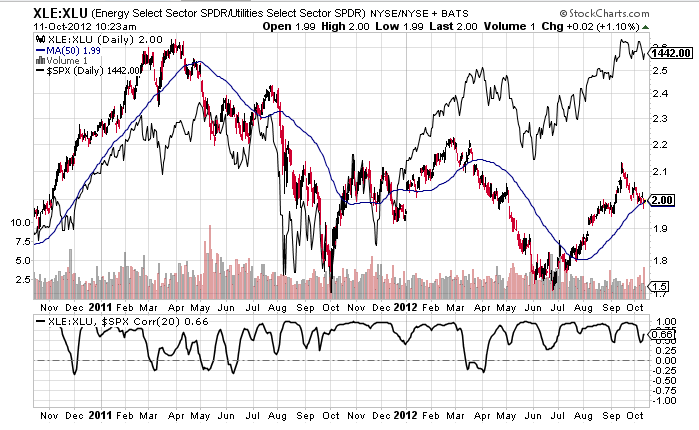 Author: John Gerard Lewis, Gerard Wealth
Author: John Gerard Lewis, Gerard Wealth
Covestor model: Stable High Yield
Would you say that the stock market has been a bit volatile lately? Even after the current turmoil ends, the market could sit idle for years. Frankly, we think that’s a real possibility. That’s why we believe that our model, which focuses on optimizing income rather than counting on stock price appreciation, is particularly well suited to these up-and-down times.
So how do we construct our Stable High Yield model to meet these market challenges? Well, we know full well that to get high yields we have to expose ourselves to interest-rate risk, which in ordinary times is no small matter. However, these are not ordinary times – in fact, the Federal Reserve recently indicated that rates aren’t likely to increase until at least 2013. So the intrinsic risk of rising interest rates would seem to be sufficiently mitigated for the next couple of years.
But to further stabilize rate risk, we attempt to anchor the portfolio with a large position in short-term fixed-income investments that naturally have low sensitivity to interest rate changes. The idea here is to add significant principal stability to the overall portfolio, while reaching for high yields with other securities. The theoretical result is relative price stability while reaping significant yield (though that cannot be guaranteed).
So how is this working out for us? Our current holdings have an indicative yield of 8.46% as of 9/12/11 (data from Covestor*).
In rising markets, model portfolios that rely upon price appreciation may show a stronger return than models that rely heavily on yield, as ours does. On the other hand, in declining or flat markets yield-based models may perform better than price-appreciation models.
Our model may not include all of the following asset classes at the present time (9/12/11), but here are some of our candidates for inclusion:
Master Limited Partnerships
MLPs tend to have yields that make them look like junk bonds. In fact, their yields can be better than many junk bonds and in some cases MLPs are quality investments.
Some investors choose MLPs for tax deferral purposes – initial returns are often considered return of capital, which isn’t always taxable. It does reduce cost basis, though. Once all of the investor’s capital is returned, he or she pays ordinary tax rates on ensuing distributions. Because of the tax deferral, investors generally prefer not to hold MLPs in IRAs or other tax-deferred accounts.
What are the risks of investing in MLPs? Well, like any asset class they can become so popular that a bubble is created. What would cause such a bubble to burst? A general market swoon could take MLPs down, of course. In that respect, MLPs should be viewed just as most high-dividend paying stocks are — their stock prices can always decline.
A more specific MLP risk is the unlikely possibility of the credit markets freezing, whereupon the MLPs wouldn’t be able to fund new projects.
Agency Mortgage REITs
The Federal Reserve’s recent declaration that it does not intend to raise rates for at least two years is good news for one of our favorite asset classes at this time: Agency Real Estate Investment Trusts.
Some high-quality agency REITs are yielding so much as of early September 2011 that it doesn’t matter to us that these stocks likely won’t provide significant price appreciation. That’s not to say that their stock prices don’t fluctuate – they do, but we’re perfectly happy to exchange reasonable volatility for very high yield. Held over a period of stable interest rates, we’re aiming for the yield to overcome any principle decline.
Build America Bonds
Build America Bonds are a result of a short-lived program that began in early 2009. We believe they’re best bought via closed-end funds. A lack of future supply could be a problem, but any such “scarcity value” would trump the liquidity concerns. Risks also include any rise in interest rates, because these funds borrow at short-term rates and invest in higher-yielding longer term securities. But again, the Federal Reserve has signaled stable rates for at least the next couple of years.
Default risk is tempered by the diversification of the fund portfolios. After all, that’s a key benefit of investing in funds as opposed to individual securities.
Editor’s note: See other high yielding Covestor models in our Chief Investment Officer Raphael Mennicken’s recent article “Looking for yield? 4 Covestor models to consider in September 2011”
*Note: Indicative yield as of end of day September 12, 2011. Indicative yield is calculated based on the last known dividend, divided by the current price, and is shown annualized. For preferred shares, the yield to maturity is used. Yield is therefore sensitive to price movements and does not represent a promise of income or total return over the next 12 months. The yield for a model is the weighted average of the yield of each position in the model, including cash, and taking into account long and short positions. Raw data obtained from Bloomberg, calculations by Covestor.


